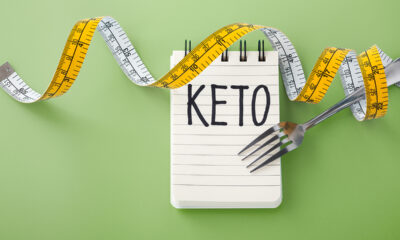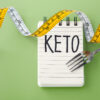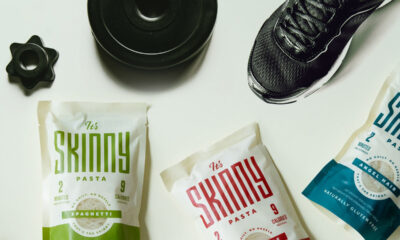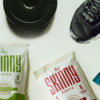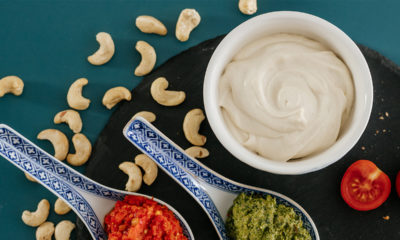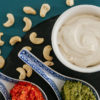Nutrition
Fight Infection With Food
Here’s how to let food be your medicine and medicine be your food using a dietary playbook that’ll fight disease while supporting your fitness ambitions.
Microbes (with a few, very rare exceptions) can only survive if fed with carbohydrates. By contrast, animal cells can run on fats. Animal cells can also run on carbohydrates and this dual-fuel ability brings huge evolutionary benefits. Traditionally, humans have switched to carbohydrate-burning during the autumn to allow them to benefit from the carbohydrate bonanza of this natural harvest-time, which allows the laying down of fat. This brought the essential survival values of insulation against cold winter weather and a pantry against lean times. Winter, spring and early summer diets were fat – and fiber based – in other words, ketogenic.
Westerners with modern food supplies live in a permanent autumn. We love this because carbohydrates are so addictive. I believe this ability to run on fats was an early tool that allowed animals to get sufficiently far ahead in the arms race to evolve. Regardless of whether this is correct, the fact remains that diets based on fat and fiber are unfriendly to invading microbes. This is in direct contrast to diets based on sugar and starch. These foods actively feed and encourage microbes. Diabetics are particularly susceptible to infection because of their high levels of blood sugar. Babies get oral thrush because this yeast (candida) happily ferments sugar in milk – even breast milk will be high in sugar if mom is eating a Western diet. Artificial Western bottle-feed is even sweeter. Indeed, I suspect it is high-carb diets that, if not creating the problem, are surely contributing to antibiotic resistance. This is the greatest problem in hospitals partly because patients are fed high-carb diets – cheap, convenient, soft and addictive – which feed microbes and encourage their survival. It is intellectually risible to feed the very microbes you are trying to kill. A dose of antibiotics kills a percentage of the target bacteria, but a carb meal between doses helps microbes to recover. Given sugar, bacteria and yeast can double their numbers every 20 minutes. It is an irony that every hospital bed has a bowl of fruit adjacent to it when fruit sugar is as pernicious as the white stuff. The starting point for preventing and treating all infection is the paleo ketogenic (PK) diet. This aims to replicate evolutionarily correct diets so we can live to our full potential in terms of quality and quantity of life. The principles of this diet are:
1. Fuel yourself with fat and fiber, not sugar and starch. Nourish yourself and starve the microbes.
2. Eat two good meals a day – no snacking.
3. Avoid dairy products which, contrary to perceived wisdom, are not natural foods. When challenged on this, I point out that opium is a natural plant but not one generally perceived as a health food. Dairy products are common allergens and are also growth promoters.
4. Avoid gluten grains. Gluten is a toxic protein and a common allergen (like dairy products) and creates a leaky gut. Allergy is estimated to afflict at least 30% of Westerners. The protein content of modern wheat may be 80% gluten compared with primitive wheat, where it was 20%.
5. Be sure your diet is rich in micronutrients. Our book, The PK Cookbook gives details of the additional micronutrients we require to compensate for the deficiencies induced by Western agriculture. An essential part of this is ‘Sunshine salt’ – a salt which contains all the essential minerals, plus a good dose of vitamin D and vitamin B12, and helps correct the deficiencies of Western foods. Combine this with a good daily multivitamin and you will have all the major micronutrients in your diet.
6. Be sure your diet is rich in spices and herbs. All plants and fungi have survived millions of years of evolution using their own particular form of chemical warfare. They too fight an arms race against microbes. All plants and fungi contain natural anti-viral, anti-bacterial, anti-fungal, antiparasitic and anti-worm toxins. Happily, many taste wonderful – again, that is no surprise as the brain has learned to seek out foods that are good for our survival and it wants us to eat them by giving us a hugely pleasurable experience. I do not think it matters which herbs and spices you eat so long as you eat a lot of them.
7. Be sure your diet is low in addictive potential. Western lifestyles are dangerously addictive – you can see many laid out when you stop to refuel your car – chocolate, sweets, crisps, cigarettes, caffeine, alcohol and gambling. As any addict will tell you, one addiction tends to switch on another. You could argue that sugar is more addictive than, and more dangerous than, smoking.
8. Be sure your diet is high in fiber. Fiber is fermented by friendly, evolutionarily-correct microbes in the lower gut (large bowel) into many helpful products. These include heat, short-chain fatty acids (another fat fuel supply) and essential vitamins, such as vitamin K. Friendly microbes train the immune system to respond appropriately and displace unfriendly microbes from the gut. These actions are all protective against infection.
All the above tactics inhibit the upper fermenting gut – this further improves digestion and absorption of food. What’s more it reduces the toxic load of Western diets in the gut which has the potential to overload the liver.
There is much more detail about the why of this diet in our book Prevent and Cure Diabetes – delicious diets not dangerous drugs and, perhaps more importantly, The PK Cookbook gives you the how. This may be a difficult diet to initiate and you may need the intellectual imperatives and practical details of the above two books to get started. It may be no consolation to you to hear that I had to work for 35 years in general medical practice, treat an estimated 20,000 patients and write four books in order to establish the diet for myself. Having arrived, I now feel genuinely sorry for people who are not doing this diet and thereby consigning themselves to a shortened lifetime with miserable potential. I do now understand the full potential of addiction, which does not just result in poor eating habits but defends them with humor and wit. We put together The PK Cookbook so that, you can enjoy a rich and varied diet with gorgeous bread and dairy alternatives.
There are further powerful interventions we can make to improve your defenses, help the immune system and kill the enemy, but the power of these interventions is hugely compromised if we are feeding our foes at the same time. Killing and feeding microbes simultaneously provides the perfect breeding and training grounds for tough microbes.
Combine this with our deteriorating immune function and we create the perfect storm. When this perfect storm will come and what form it will take is not known. What we do know for certain is that come it will and we do not currently have the necessary defenses to prevent deaths. Those people with good defenses will have a much better chance of survival.
Typical daily PK diet:
Breakfast:
Choose from/mix and match:
• Coconut yogurt (e.g. Coyo)
• Fresh, frozen, cured or tinned fish and shellfish. Fresh, frozen, cured or tinned meat: salami, paté, vegan cheese
• Omelet with mushrooms
• Fry up – bacon, eggs, PK bread fried in lard, sausage (high-fat, rusk-free), liver, black pudding – see The PK Cookbook
• No snacks: Quench thirst with water. Use coffee and tea judiciously.
Lunch:
None – have a kip instead.
Supper:
• Olives, nuts – e.g. Brazils, pecans (some nuts are high in carbohydrate, including my favorites, cashews and pistachio nuts, so beware)
• Large bowl of sauerkraut
• PK toast with above breakfast suggestions
• Large bowl of salad with mayonnaise or French dressing
Main course:
• Meat, poultry, fish cooked with lots of herbs and spices
• Abundant green vegetables
Puddings:
• Berries with coconut milk
About the author: Dr Sarah Myhill is a former Secretary of the British Society for Ecological Medicine and is the author of a new book: The Infection Game.



